It goes without saying that walking all day, mile after mile, on the Camino de Santiago not only makes you hungry but gives you a free pass to eat whatever you want and however much delicious food that you want. No diets here. Food is a huge part of any culture and is a big part of the Camino de Santiago, which if you have read the book Sunrises to Santiago, you already know. What you eat is just as important as how you eat it. The how meaning the setting, who you are with and the multi-course Pilgrim Menus that are found all along this historic route through Spain. If you are anything like me you try to make a list of the things you don’t want to miss eating when you visit a country. I will make it easy for you. After living in Spain for 2 years and exploring the food of each region I feel I have a pretty good grasp of the gastronomy of this wonderful country. So let’s take a food porn journey shall we. Here is a list of foods you must eat on the Camino de Santiago.
Gâteau – This Basque specialty is the perfect beginning to your food journey. If you start in St. Jean Pied-de-Port these are easy to find in town. It is a pastry stuffed with cream and fruit. Simple and delicious. As usual the deliciousness of a simple French pastry boggles your mind. Goes great with a cup of coffee.

Jamón Ibérico – In my opinion this is the most delicious cured meat on planet earth. Unique to Spain and made from pigs that roam through oak forests and eat acorns, herbs and grass which imparts a flavor all it’s own. If I could pick one thing that you must try before leaving Spain it would be this. Don’t worry, you will see it everywhere. Eat it on a bocadillo (sandwhich), eat it for breakfast, eat it with some Spanish almonds or as a pincho (small tapa). Whatever you do just try it at least once. Oh, and don’t discard the fat. It is part of the experience.
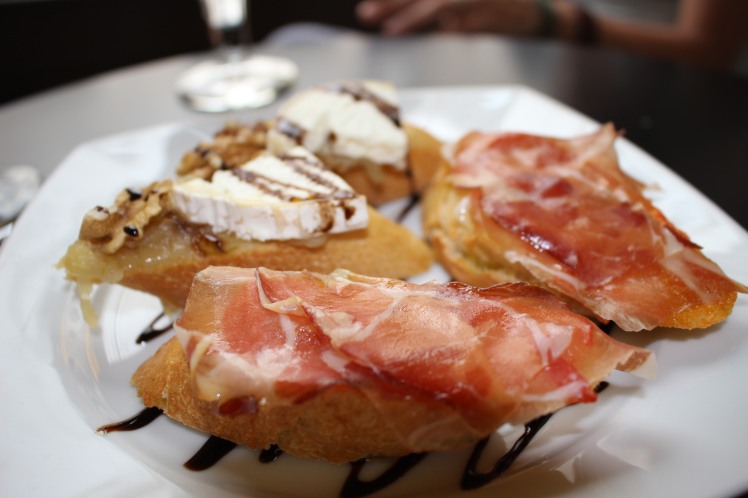
Pimientos de Padrón – You will start to see these available once you get to the end of your trek specifically in Galicia. This is a specialty of this region in Spain. It is a very simple dish but wonderfully delicious. Padrón peppers are a specific green variety of peppers found in northwestern Spain and are simply fried in Spanish olive oil and served with salt. Somehow smokey, not spicy at all, salty and deeply satisfying….just try em, trust me.
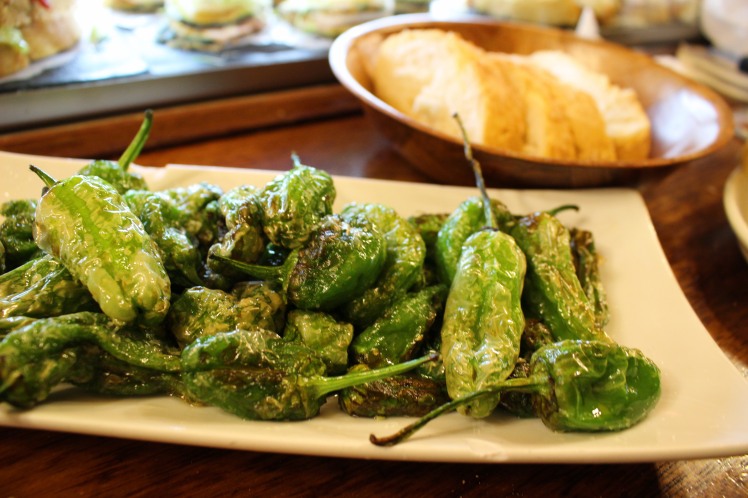
Lentil Stew – A pretty common dish throughout Spain this is one of the most satisfying dishes you can eat after a long day of walking the Camino de Santiago. It is normally a choice on a Pilgrim Menu and usually an option for your first course. The second option is usually a salad or something along those lines. Opt for this thick stew which usually contains smokey chorizo, carrots, onion, garlic and of course lentils. Not the most beautiful of dishes to look at but it is delicious!
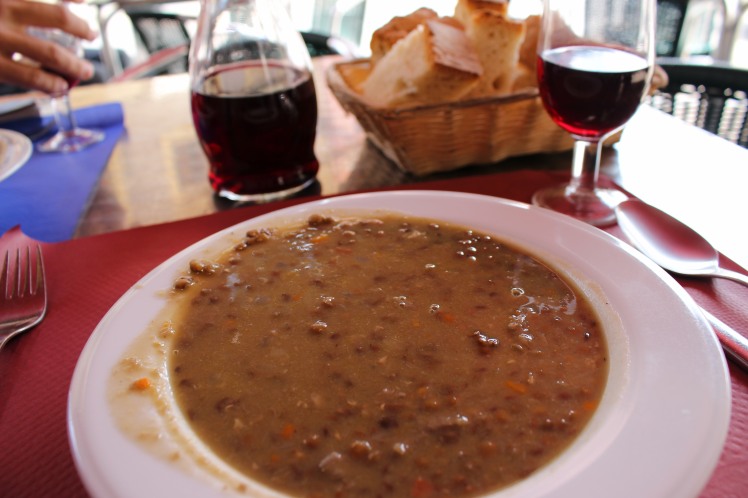
Tostada con Tomate – Toast with tomatoes. The best breakfast in Spain in my opinion. Order it for breakfast at any bar along the Camino de Santiago. Basically you will get a toasted baguette with a small bowl of blended tomato served with salt and olive oil. That’s it. Simple and perfect with a café con leche.
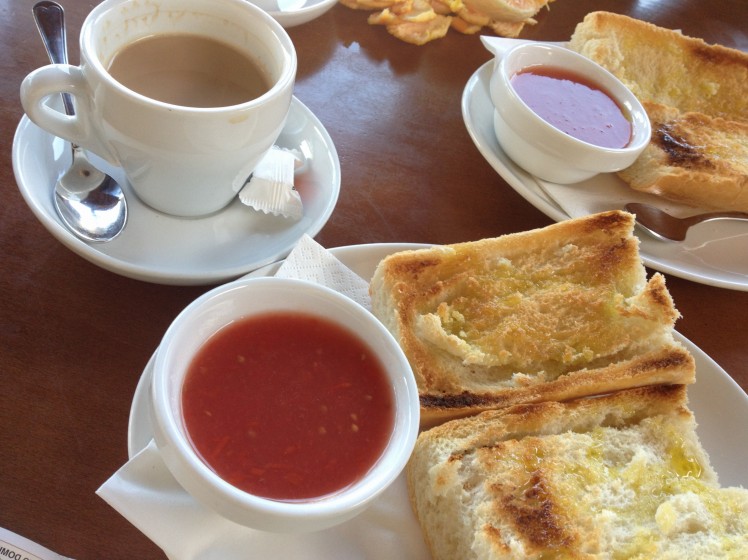
Pulpo – A Galcian specialty which you will start to see pop up on menus after Vega de Valcarce. The dish of this region is pulpo (octopus) normally served with some smoked Spanish paprika, salt and drenched in olive oil. This is one of those things you should try but might not love. I think it is an acquired taste but hey it is all part of the adventure.
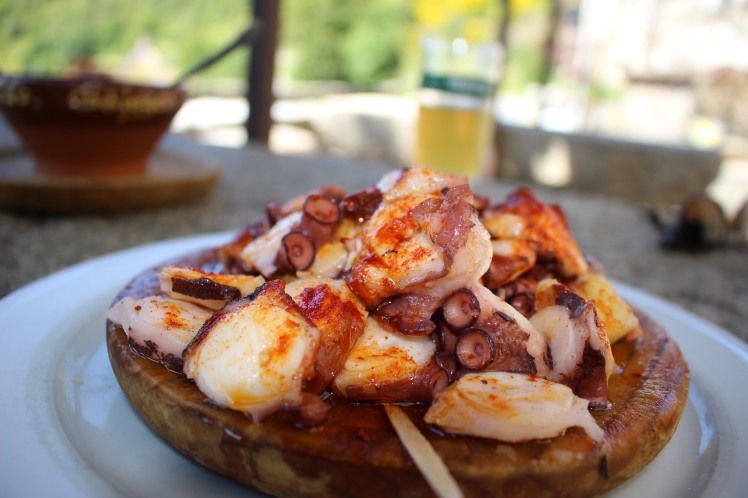
Orange Juice – WTF you might be thinking. Why would I add this to a list of must try foods in Spain? Because it is the best OJ on the planet. Sorry Florida. Spain grows some amazing citrus and the fresh squeezed, at the bar juice is incredible. Do not miss a glass of this orange gold. Vitamin C is believed to help heal sore muscles too!
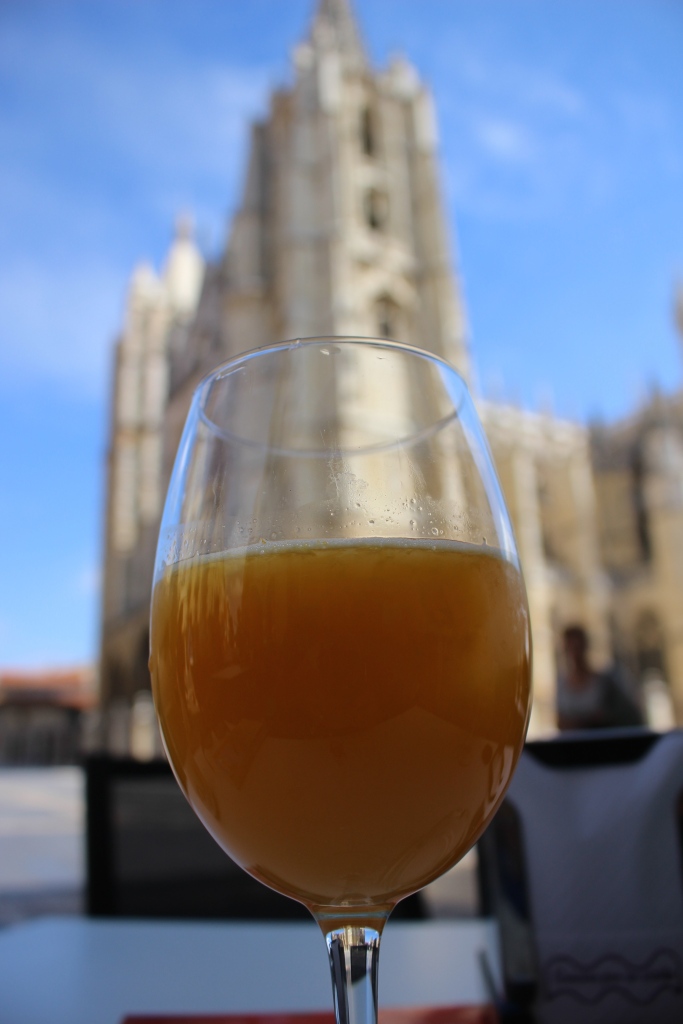
Tortilla Española – Enjoyed throughout most of Spain make sure you eat this dish before you get to Galicia. For some reason it disappears from most bar menus as you get closer to the end of your trek. Also known as a Spanish omelette it is a great source of protein for your aching body. Eggs, potatoes and sometimes onion. A perfect breakfast or lunch. You can order it on a sandwich in many establishments as well. Many times you will see the option for a Spanish omelette or a French omelette. The difference is simply that the Spanish omelette contains potatoes.

Fish – When in doubt order the fish. Spain enjoys some of the freshest seafood in the world and on many a Pilgrim Menu this is an option for the main dish. The type of fish normally follows the region. You may get salted cod or trout. Whatever you get it is usually pretty darn good and I kept telling myself that the fish oil was lubricating my joints which were killing me on the Camino de Santiago.
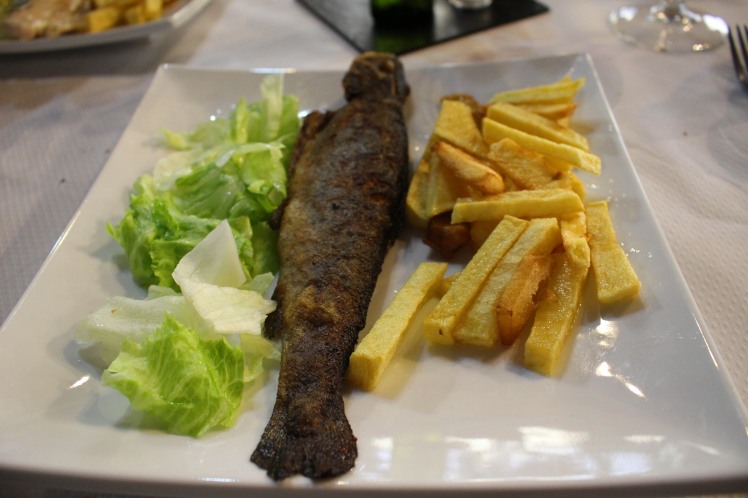
Caldo Gallego – Another Galician specialty which you won’t see until you reach this region on the Camino de Santiago. This is a delicious white bean soup that is perfect for those common rainy days in northwestern Spain. After you have walked for hours in the rain you will start to crave this stew. It normally has bits of ham, potatoes and greens which are swimming in a delicious broth. Don’t miss it!
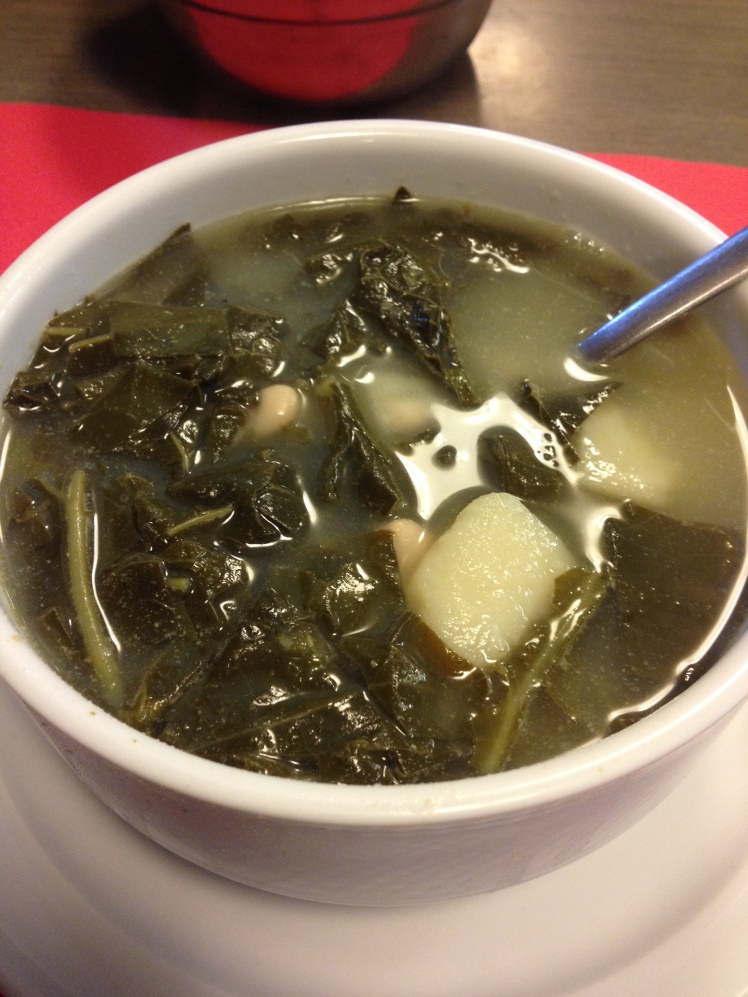
Fried Baby Squid – Looks terrible. Tastes incredible. Fried in olive oil with garlic I could eat these all day long!
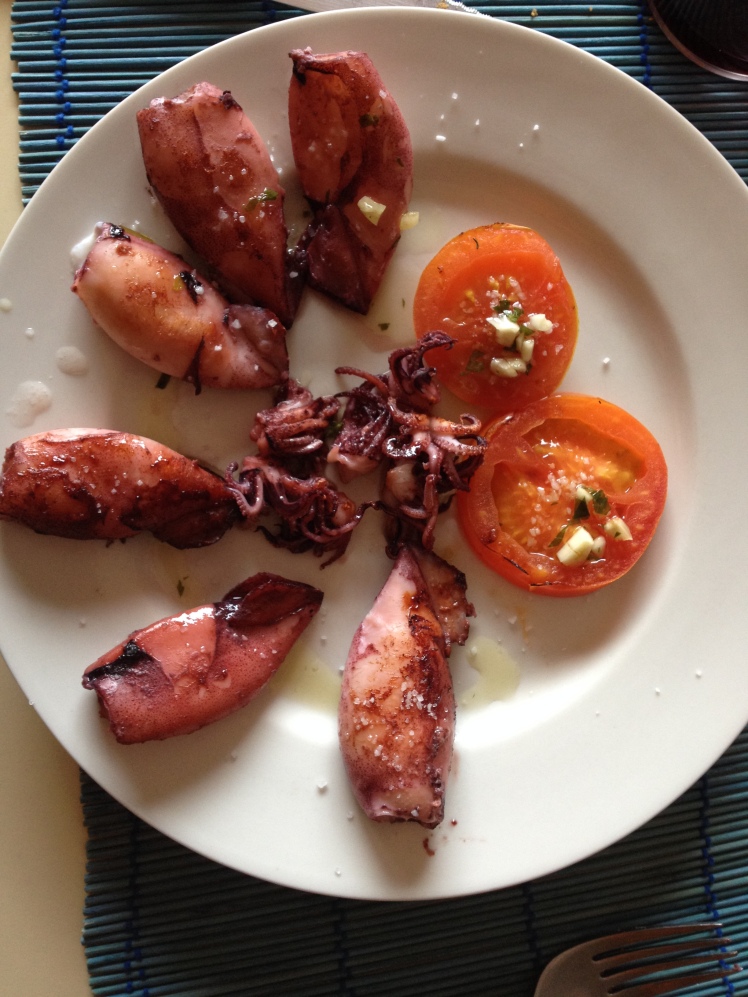
Rioja Wine – The Camino de Santiago takes you right through one of the best wine regions in the world. Make sure you try at least a glass of the Crianza (a step up from the house wines and bottles that come with your pilgrim menu). Specifically drink like royalty in Logroño. This is the capital of the Rioja region and cheap (expensive tasting) wine abounds in this popular stop along the Camino de Santiago. Crianza = at least 1 year aged in an oak and 1 year in the bottle. Reserva = 1 year in oak and 2 years in the bottle. Gran Reserva = 2 years in oak and 3 years in the bottle. Also don’t miss the famous fountain of wine!
Tarta de Santiago – This literally translates to the cake of St. James so as a pilgrim you pretty much have to eat this! This almond cake will start to appear once you reach Galicia. It makes a great afternoon snack with coffee or tea. The recipe dates back to the middle ages meaning that many a pilgrim has indulged in this historic cake before you.
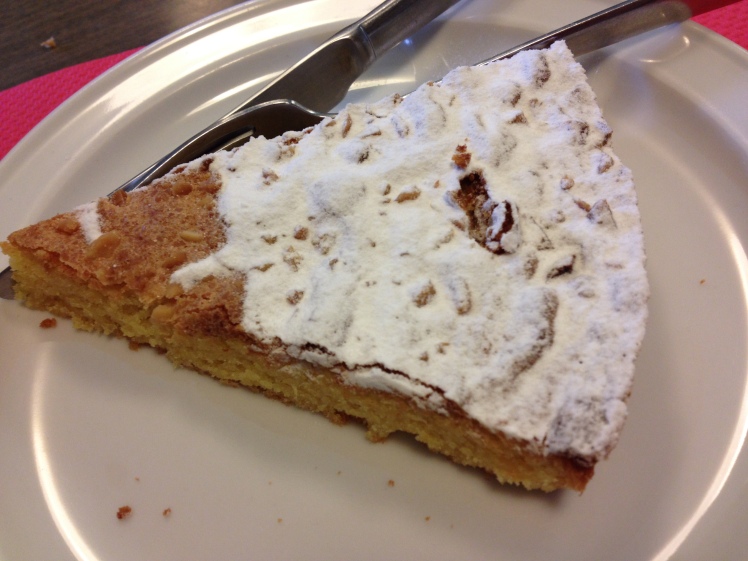
Enjoy the food and enjoy the journey!!
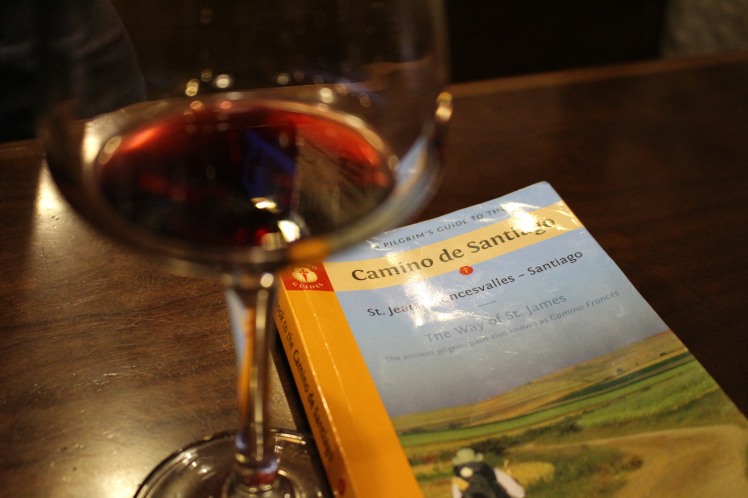
My mouth was watering after reading this post! I walked the Camino last summer and loved so many of these foods (although I think the cafe con leche should get its own entry, I don’t think a day went by when I didn’t have one). 🙂
LikeLike
Thanks Nadine! I agree! Cafe con Leche should most definately get its own entry:) That is amazing you got to walk the Camino too!
LikeLike
Reblogged this on Tapas and Travels and commented:
I’ve had all of these amazing treats and I’ll have them again when I do part of the camino next month! Check this post out.
LikeLiked by 1 person
Thank you for the reblog Lorial!
LikeLike
No problem! It’s a great article
LikeLike
Lovely post. How easy did you find your move to Spain? I am looking to relocate in a few years time but worried about the process and transition. Could you give me any advice/ tips?
LikeLiked by 1 person
Hi Kylie, That is exciting! You will love living in Spain. Even the things that are frustrating/cultural differences will grow on you. Hmm tips. You will need to get the proper Visa from the Spanish consulate in the USA before you leave. This process takes a while so plan in advance and you will most likely have to apply for the visa in person at the consulate which has several locations in the USA. If you don’t have a location in mind yet, I have been and lived in many places in Spain. By far my favorite is Granada. So if you have the choice, head south. Great combo of things to do, culture and a low cost of living. Renting an apartment in Spain is very affordable in most cities. Electricity is expensive so use sparingly. Start practicing that Spanish. Knowing the language made my experience so much richer. To find an apartment DO NOT try to rent one online before you leave. Walk the streets in your chosen city when you arrive, find the neighborhood you like, then look up at the windows and signs everywhere that say “se alquila”. This is the best way to find a place to live. It was nerve wrecking but worked out perfectly for me. I hope that helps!
LikeLike
Wonderful post – I travelled through northern Spain a couple years ago and managed to eat almost everything on this list except the pastries – we were driving and therefore not walking off the calories.
LikeLiked by 1 person
Would you be able to find Gateau anywhere else on the Camino?
LikeLike
You could possibly find Gateau in the towns closest to the French border, but it is not common anywhere else on the camino, unless you stumble upon a specialty shop of course. But not common.
LikeLike
Thanks for posting this! It brings back wonderful memories. My favorites are the Caldo Gallegos, pimientos de Padron, and the torta de Santiago.
LikeLiked by 1 person